Menus
- Less is more
- Thanks to the increased stroke of 596 cm³
- The Domi at Dieter Cordes alias Doc Norton
- The engine ran fine, but not for long
- Data Norton Dominator
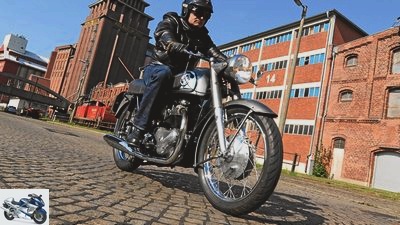
Siemer
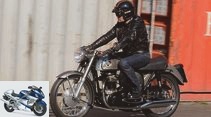
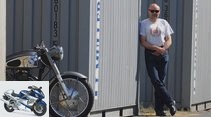

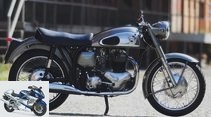
25th photos
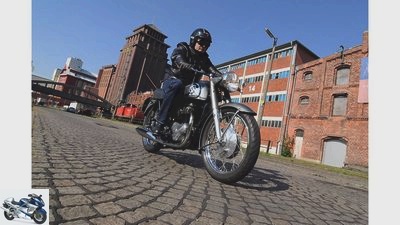
Siemer
1/25
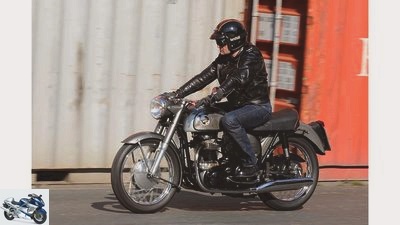
Siemer
2/25
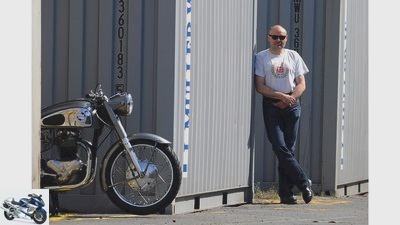
Siemer
3/25
Bernd Lienstadt doesn’t need show talent as a two-wheeled companion. He much prefers honest skin.
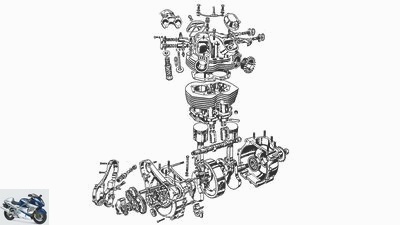
Siemer
4/25
Not only relatively simple, but also neatly constructed – this is how the Norton twin lasted three decades.
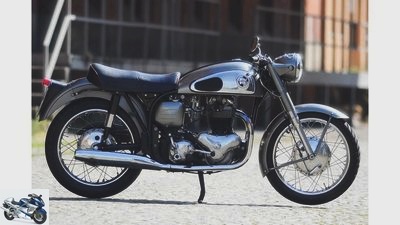
Siemer
5/25
In the Dominator Model 99, the twin does …
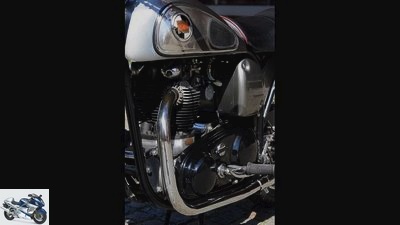
Siemer
6/25
… a very balanced impression.
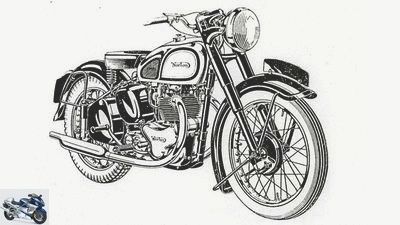
Siemer
7/25
The Model 7 still came with a gray cast iron cylinder head.
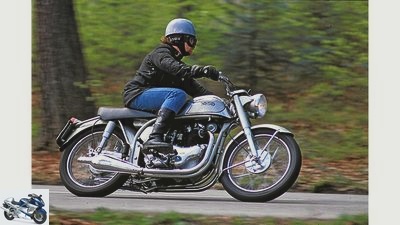
Siemer
8/25
With a light metal head, the later Model 88 produce around 30 hp.
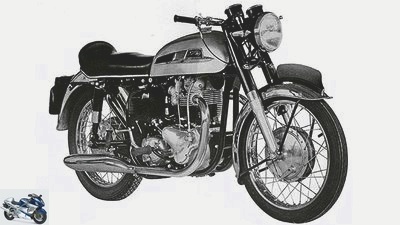
Siemer
9/25
The 650 SS is considered by many to be the most beautiful of all Nortons.
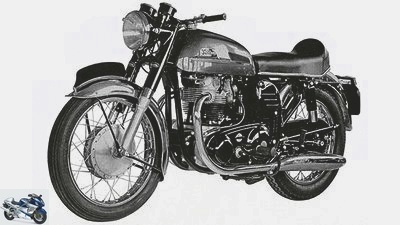
Siemer
10/25
In the Atlas, the twin could not really convince.
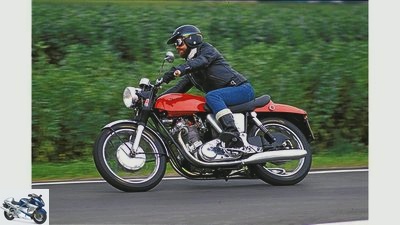
Siemer
11/25
The Commando offered Hopwood’s construction a great stage.
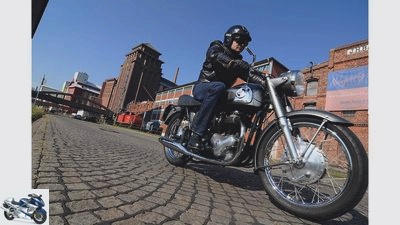
Siemer
12/25
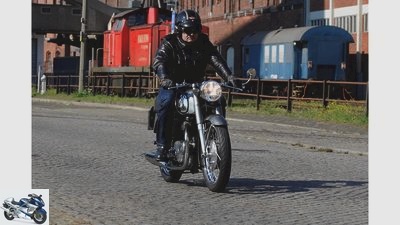
Siemer
13/25
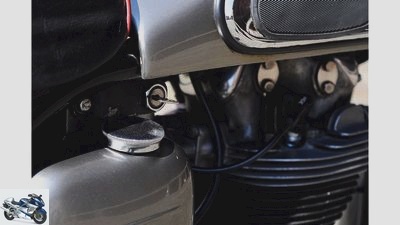
Siemer
14/25
Because the Domi is almost dry and its twin is okay, oil rarely needs to be topped up. Not even when driving overland.
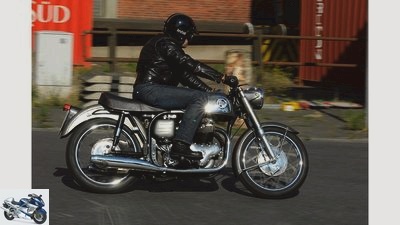
Siemer
15/25
The exact handling also contributes to the everyday suitability of the Domi.
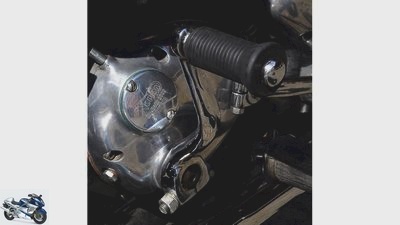
Siemer
16/25
The four-speed gearbox, which can be shifted easily and with sufficient precision, is a real pleasure, and there are no complaints about starting behavior either.
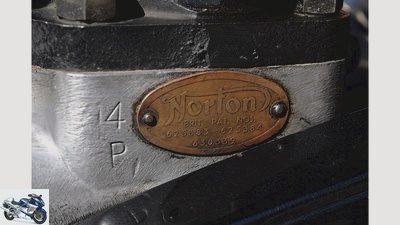
Siemer
17/25
When these markings were made in Bracebridge Street in Birmingham, Norton was already part of the AMC group with AJS and Matchless.
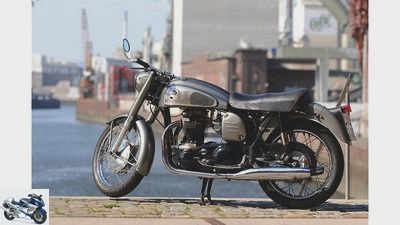
Siemer
18/25
Red decorative stitching and unusual tank emblems: If you are looking for the big show, you will hardly find it with Norton’s Model 99.
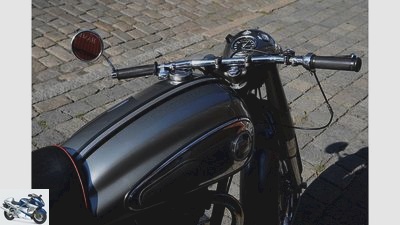
Siemer
19/25
This is how tidy workplaces can look. Behind the almost straight and quite wide handlebar, the driver sits surprisingly casual.
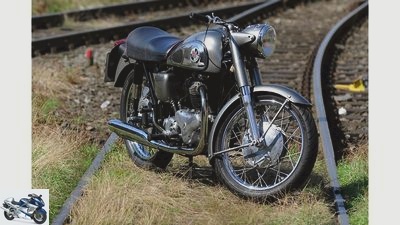
Siemer
20/25
The famous road holder fork has a neat simplex full-hub drum brake.
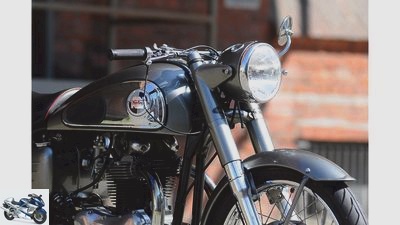
Siemer
21/25
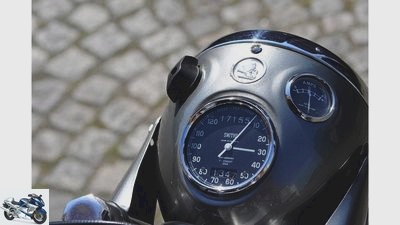
Siemer
22/25
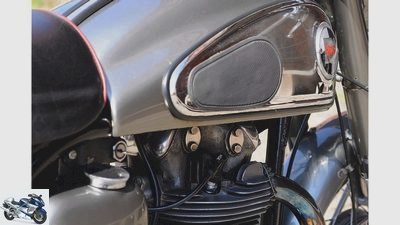
Siemer
23/25
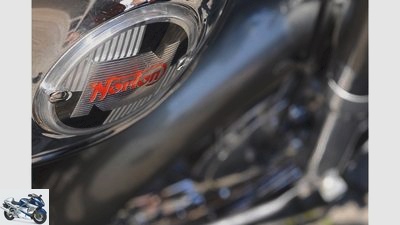
Siemer
24/25
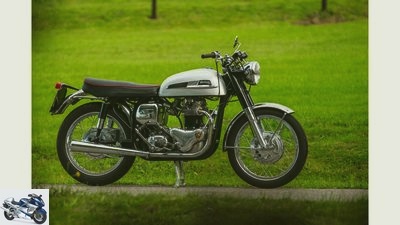
Siemer
25/25
Norton Dominator 99
Less is more
Content of
Often less is more, says someone who should know: Bernd Lienstadt could drive Norton Commando every day, but usually prefers a predecessor: the Norton Dominator 99.
Every decade in motorcycle history has produced three or four machines that combine a lot of what engineering and production methods produce, what designers and customers demand. Seldom has it been as spectacular as it was in 1968 with the Honda CB 750, whose epoch-making achievements are burned into every brain. No, sometimes these stars come in clothes that seem almost inconspicuous today, and require a sense of history so that they reveal their qualities. That’s exactly what she is like NOrton Dominator 99, and it has a hell of a lot of qualities.
Buy complete article
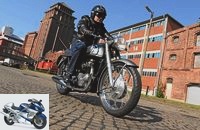
Norton Dominator 99
Less is more
Norton called upon the aspiring designer Bert Hopwood immediately after the Second World War to also get a parallel twin up and running. The man knew his trade, he had developed the Triumph twin under Edward Turner, and therefore he thoroughly eliminated some crucial weaknesses of the model. His 500 series, presented in 1948, had widely spread exhaust ducts in the interests of better cooling, and the shafts for the pushrods of the valve train run inside the cylinders so that no extra pipes had to be sealed. Unfortunately, Norton asked Bert Hopwood to build his very successful construction into the hand-made frame of the old single-cylinder model ES2. It drove up the price, as a result of which the sales figures down and was also old-fashioned with its straight-way suspension.
Thanks to the increased stroke of 596 cm³
Even the famous Roadholder fork couldn’t save much – the Norton Model 7, which was sold from 1949, disappointed all expectations, and Hopwood announced. Much too early, as already indicated in 1952, when its engine took place in a cane, which was without doubt the best of its time – the patented feather bed frame with the wide, extremely stable, seamless double loop made of the best Reynolds steel tubing. In connection with the Manx single-cylinder, it was considered to be almost unbeatable since its racing debut in 1950 and had already won three TT victories. Now it migrated to the two-cylinder series, if only because of the outstanding handling and the exemplary stability, the new model baptized Model 88 put every Triumph and BSA in its pocket. Too bad that performance counted more than anything else in the mighty US market, and so Norton had to react to the 650s from BSA and Triumph: from the bore that was enlarged by two to 68 mm and the one from 72.6 to an impressive 82 mm Stroke resulted in exactly 596 cm³, and this engine finally brings us to Bernd Lienstadt. One of them fires his Norton Model 99.
Born in Westphalia, he discovered his weakness for classic British equipment as a boy, but then bought a Gilera for lack of money and opportunities. The small four-stroke singles still delight him today, and he has also been loyal to a 200cc Vespa for ten years. Then, however, with Yamaha’s XS 650, the first great co-runner entered his life – Bernd had arrived. Almost. Fate flushed an outwardly chic and roadworthy Norton from Bremerhaven, where she had shared the garage with a Velocette, up the Weser to his home town of Bremen. There it might have always been the little sister of the XS, but the Anglophile Nippon twin came from an estate, and more than 20 years after the purchase, the previous owner’s son asked if he could get his father’s machine back. Bernd said yes. But no digressions now: in the autumn of 1998 he acquired the ’59 Domi, in winter she came to the doctor.
Everything about Norton motorcycles
The Domi at Dieter Cordes alias Doc Norton
Dieter Cordes alias Doc Norton from Barghorn in Oldenburg should get to the heart of the Norton Dominator 99 with his healing hands. And it reappeared full of worry lines: The rocker arm shafts have a slot at the end through which the lubricating oil can penetrate. If a shaft that has become loose twists – often when the engine is hot – the slot twists too, and the rocker arm and shaft are damaged. Complicated. Then new seats and valves, and the light metal head became the most expensive item of the restoration. The non-standard upgrade with valve stem seals was hardly significant in terms of costs. Now one floor down: the cylinder was booked, and that seldom works well because of the overall rather thin walls. So here too, which is why a new one came along, plus new pistons of course. As a consolation, the four-speed transmission made a very decent impression.
Over and over again Lienstadt traveled out to the flat country to complete the work together with Cordes. “It was definitely not because of Dieter that it lasted more than two winters,” he grins and is still happy about his fruitful years of apprenticeship. He wanted a vehicle, not a showpiece, so the two proceeded accordingly. They completely renewed the electrical system and upgraded to twelve volts. Quite pragmatically, Bernd donated an electronic Boyer ignition, the coils of which disappeared in the air filter box, the black box next to the battery. Boss Cordes and Stift Lienstadt also radically modernized the power transmission with a toothed belt instead of the primary chain, which often had to be retightened, and a smooth-running dry clutch, actually intended for the Commando. A notorious oil hole in the Norton Dominator 99 was already plugged with this, because the cover of the primary drive is held in place with a central screw, and if it is tightened too much once, the cover is crooked and lets oil through. The active martial artist Lienstadt can get over the fact that his clutch now requires slightly higher operating forces. He finds the somewhat “longer” overall ratio due to the toothed belt primary drive quite pleasant. Unfortunately, the space available prevents an O-ring chain as a secondary drive – one of the very few weaknesses in tough everyday life.
The engine ran fine, but not for long
In the interest of a carefree and long-term cooperation, Dieter Cordes recommended improving the oil cycle. So spray holes were drilled into the connecting rods, through which oil now shoots to the piston crowns. In addition, the original oil pump received a drive worm from the Commando and thus built up more pressure. In his joy at the successful rebuild, Bernd made a tiny mistake at the very end: The engine ran fine, but not for long because it was sucking in the air. New piston rings were due, since then it’s been quiet. That means that this Norton Dominator 99 has needed nothing more than maintenance and wear parts for around 15 years, although it had to be used for several extended vacation trips to Spain or Italy, accompanied the daily commute to work for a few years, knows almost every corner of Germany . “Around 50,000 kilometers,” reports its owner, not without pride.
The Norton Model 99 weighs a good 180 kilograms with a full tank of fuel, and its 31 hp engine is nominally only 0.5 more than the last 500. “In fact, it should be a little more,” says Bernd, referring to the ease with which his motorcycle strives towards the 100-mile mark. The temperament is even more convincing at medium speeds. Then the Langhuber steps up spontaneously and cheerfully shoots up, then the refined, restrained facade of the fine Norton gets small cracks, then she is utterly greedy British twin. Bernd enjoys this characteristic: “It fits like a glove on small country roads. If I want to go fast, I need gears three and four, when strolling only the last one. ”And the term fast is based on today’s traffic. The great chassis is only too happy to play along, but does not like maintenance problems. “I change the fork oil every year and I never run the tires close to the wear marks.”…
The relationship between Bernd and his Norton Dominator 99 can be regarded as highly stable, it has long been agreed in which speed ranges violent vibrations are allowed and where not: “With a good 100 in the fourth, it is allowed.” It is not known whether both 2012 a crisis had to go through when Bernd bought a Commando, the Fastback 750. “Built in 1968, the price was right, looked after by Dieter Cordes,” he outlines the starting point, “and I had just given away the XS.” He wanted something with around 50 hp again. He liked having two motorcycles with a common history, because the Commando twin is based on the same construction as that of the Norton Dominator 99. As a trained neurobiologist, Bernd could probably explain why he still belittles the Fastback 750s today. “Yes, it’s fun, it has this crazy start. But somehow it’s also a show-off motorcycle. ”He doesn’t like to keep up with that every day. But then he remembers – entirely chairman of the Bremen branch of the Norton Owner Club – on pragmatic arguments to explain his preference: “The Domi is simply more comfortable for small and medium-sized people. And it is so neatly designed that you just have to think it’s great. ”An icon of the 1950s, as we said earlier.
Data Norton Dominator




25th photos
Pictures: Norton Dominator 99
To home page
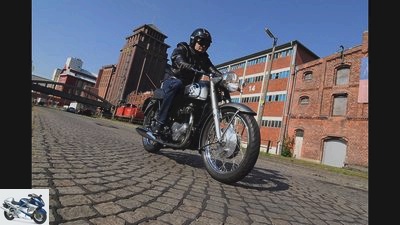
Siemer
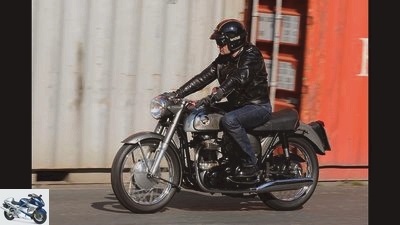
Siemer
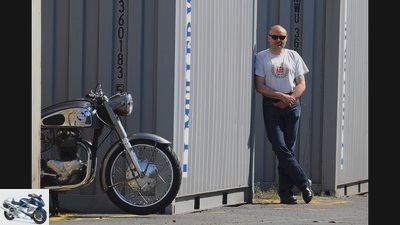
Siemer
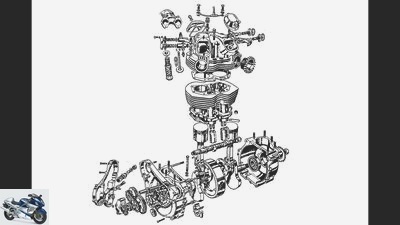
Siemer
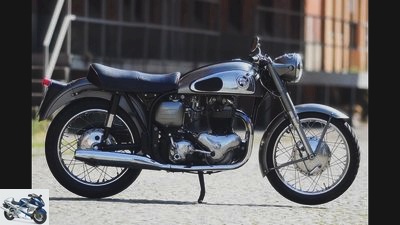
Siemer
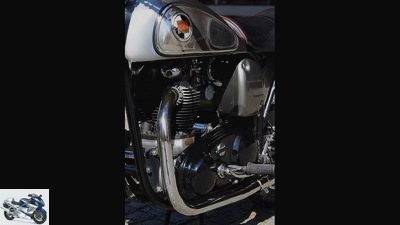
Siemer
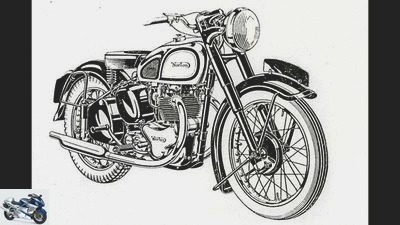
Siemer
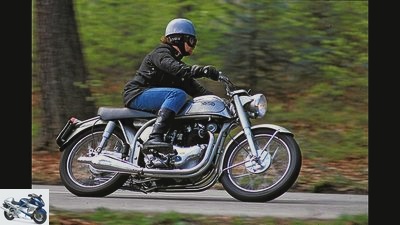
Siemer
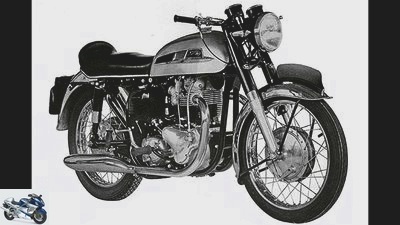
Siemer
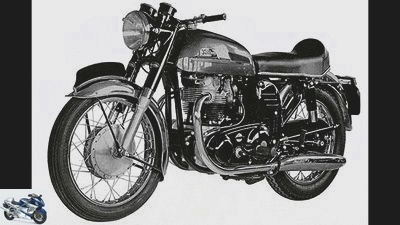
Siemer
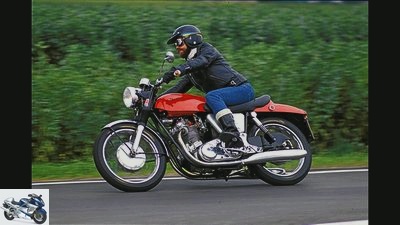
Siemer
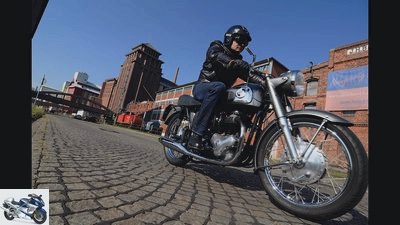
Siemer
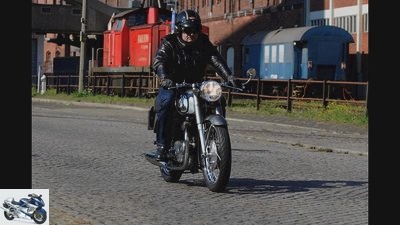
Siemer
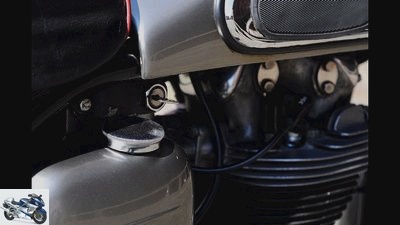
Siemer
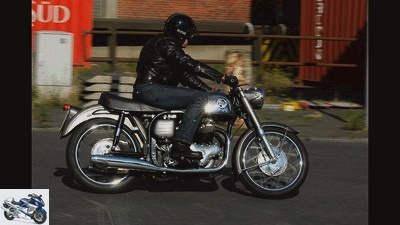
Siemer
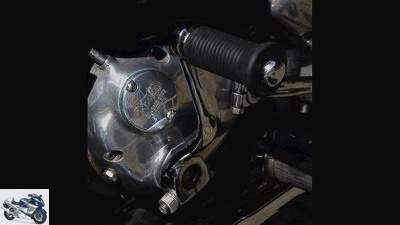
Siemer
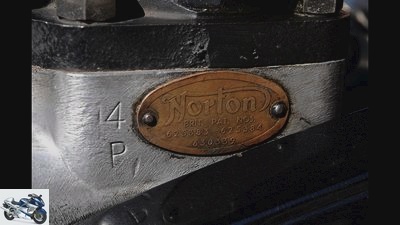
Siemer
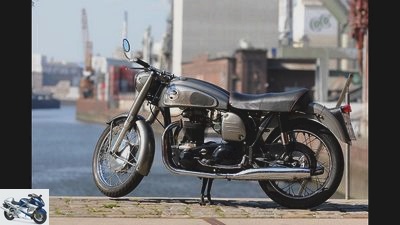
Siemer
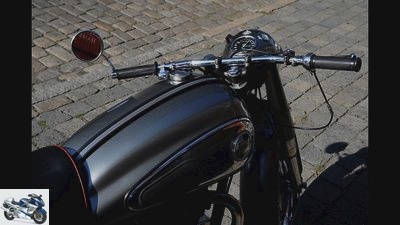
Siemer
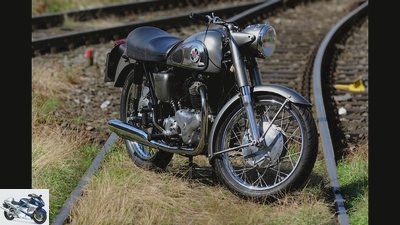
Siemer
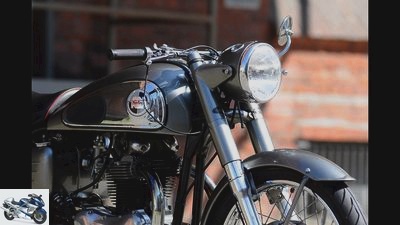
Siemer
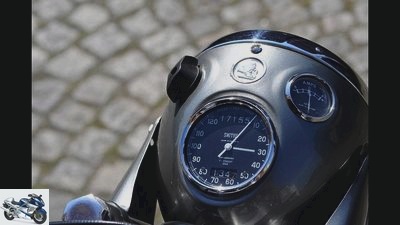
Siemer
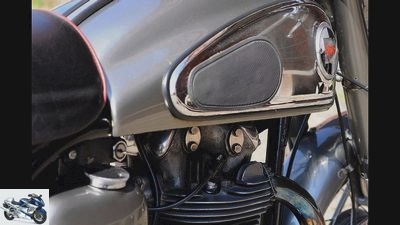
Siemer
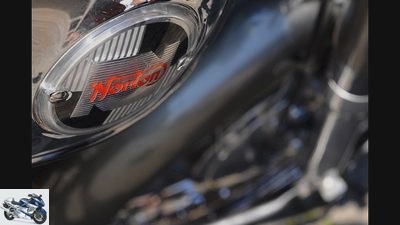
Siemer
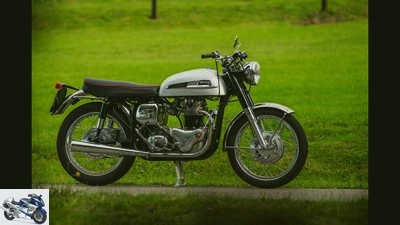
Siemer
The engine: Norton twin
Siemer
Simple, clean and durable: the Norton Twin.
Today it is often said that Bert Hopwood followed classic English principles in constructing the Norton parallel twin. It is forgotten that these principles, established by the Speed Twin from Triumph, were already ten years old in 1947, but in the meantime everything else counted, just not powerful motorcycles. Only after the war did the competition set out to pursue them, and BSA was clearly ahead because their A7 was actually ready for series production in 1939 – and was now released in 1946.
So Norton was under a lot of pressure and there was no time for experiments. For this reason alone, a pre-unit construction was the obvious choice, then you didn’t have to worry about the gearbox. With the engine itself, Hopwood unabashedly relied on everything that had meanwhile proven itself in the Speed Twin. Norton also installed a 360-degree crankshaft with only two roller bearings, a central flywheel and external counterweights. The camshaft is driven by a chain and – unlike the Triumph – lies in front of the cylinder base, i.e. relatively high. Through two channels cast into the cast iron cylinder block, the aluminum tappets operate two valves each using rocker arms. The rocker arm housings form a part with the cylinder head, and the adjusting screws of the valves can be accessed via small and easily sealed assembly openings. The inlet valves on the inside share one of these openings, which – incidentally, with 33 mm of the same size – have one outlet valve each. Compared to the 80 and 82 mm in the Triumph and BSA, the Norton’s 72.6 mm stroke looks very modest, but both power and rated speed (29 hp at 6000 rpm) are on a comparable level.
Siemer
In the Atlas, the twin could not convince due to its vibrations, so it was decoupled from the frame in the Commando.
The Model 88 from 1952 made its debut with the epoch-making feather bed frame, but initially had to adopt the unchanged engine. It was not until 1954 that it received the light-alloy cylinder head that had already been tried and tested in the off-road spot, thereby adding 1.5 hp. Triumph had been successful on the US market with the 650 Thunderbird since 1949, and Bert Hopwood, who had migrated to BSA, had also completed a 34 hp 650 with the A10 in 1950.
Norton reacted very late, it was not until 1956 that the larger bore and longer stroke as well as 31 hp did the Model 99 halfway to the competition level. The Manxman, which is only available in America, also managed the 650 cm³ from 1960, in the beautiful 650 SS, thanks to double carburettors and significantly increased compression, the hip 49 hp at 6800 rpm came out. While this sports motorcycle can still be certified as having appropriate engine characteristics, the engine, which is now over 20 years old, revealed its limits when it competed in the all-rounder Atlas in 1962, pushed to 745 cm³ and 55 hp. The part shook violently, until the mid-1960s the customer complaints increased so much that Norton resorted to the radical solution: For the Commando 750 presented in 1967, the motor and gearbox – now tilted slightly forward – were decoupled from the frame in terms of vibration. The extremely popular Commando, sold in various versions, remained until 1977, the last five years as an 850 with a real 828 cm³. So Hopwood’s construction had lasted for nearly three decades.
Related articles
-
On the move with Ducati 860 GTS and Norton Commando 850
fact 32 photos fact 1/32 Ducati 860 GTS and Norton Commando 850 on the move. fact 2/32 Ducati 860 GTS and Norton Commando 850 on the move. archive 3/32…
-
Norton Command 961 driving report
Cathcart 8th photos Norton 1/8 Norton Commando 961 SE Norton 2/8 Norton Commando 961: The Cafe Racer (13,495 pounds) features a sports exhaust. Norton…
-
Cult bike Norton Commando 750 Roadster
Wait Cult bike Norton Commando 750 Roadster 1967 a real superbike Norton rose to its former size one last time and in 1967 created the Norton Commando…
-
Impression Norton Commando 750 Roadster
Impression Norton Commando 750 Roadster Superbike for a summer In a brief moment of non-simultaneity, the slim and excitingly styled Norton Commando was…
-
Honda NX 650 Dominator in check
Jacek Bilski 15th photos Jacek Bilski 1/15 With its little plastic body, the NX 650 looked as if Honda’s 1988 enduro novelty was about to leave the…
-
Norton Manx F-Type replica in the studio
Bilski 17th photos Bilski 1/17 One of the few photos that served as a template for the Norton Manx F-Type replica. Bilski 2/17 The “Norton-Franz”…
-
Zongshen Cyclone RX6: Adventure bike with Norton twin
Zongshen 8 pictures Zongshen 1/8 The Chinese motorcycle manufacturer Zongshen is planning a model family around the 650 Norton Twin, on which the Chinese …
-
Norton Commando 961 Sport MK II (2018) in the test
Arturo Rivas 11 photos Arturo Rivas 1/11 How well does the Norton Commando 961 Sport MK II of the 2018 model year perform in the test? Arturo Rivas 2/11…
-
Test: Norton 18 H racing machine
Noll Test: Norton 18 H Racing motorcycle from the 1920s Content of In the 1920s, the Norton 18 H was one of the most successful half-liter machines – and…
-
Norton 16 photos Cathcart 1/16 Norton V4-RR and Norton V4-SS. Cathcart 2/16 Norton V4-RR and Norton V4-SS. Cathcart 3/16 Norton V4-RR and Norton V4-SS….